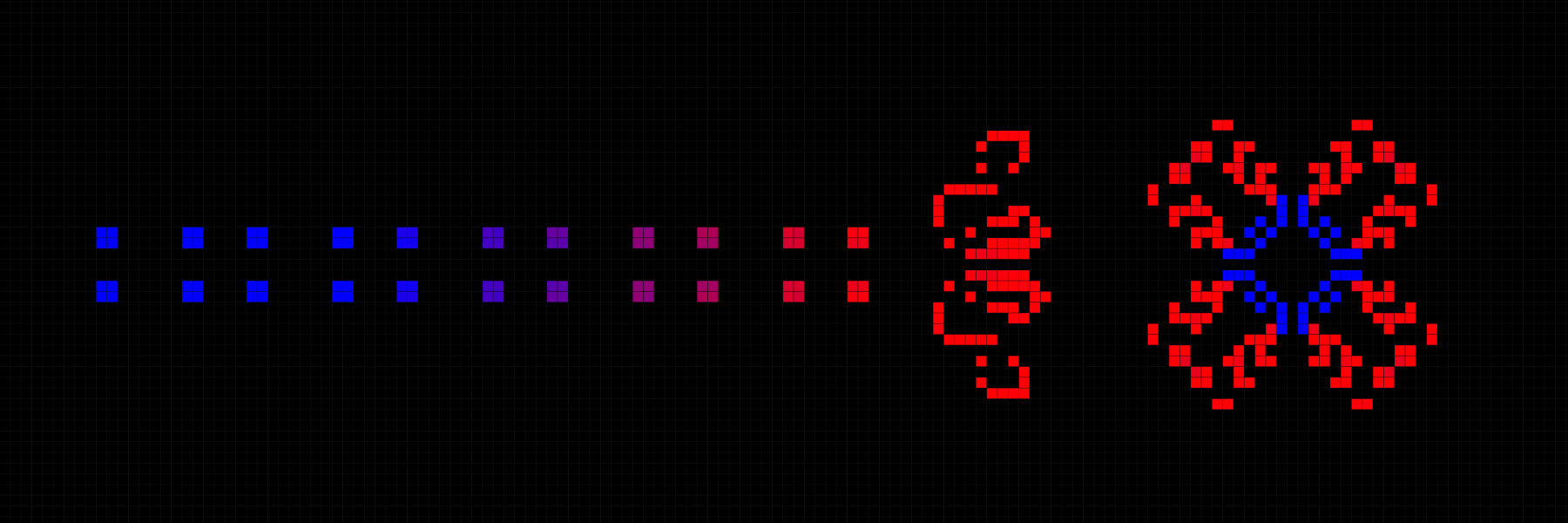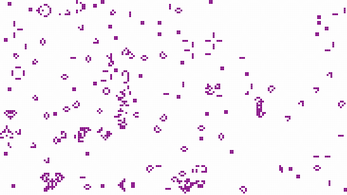
Game of (No) Life
A downloadable game for Windows and Linux
# Introduction
Welcome to Game of (No) Life, which is just a fun little environment to play around with Conway's Game of Life.
In a nutshell, it is a cellular automaton where cells on a grid live, die, or reproduce based on simple rules, simulating complex patterns and behaviors. These rules are:
- A live cell remains live in the next timestep if it has either 2 or 3 live neighbors in the current timestep.
- A dead cell becomes live in the next timestep if it has 3 live neighbors in the current timestep.
- All other cells must die (or remain dead)! Valar morghūlis!!
Invented in 1970 by John Horton Conway, back when computers were shite, the game has been fascinating mathematicians, scientists, artists, teachers, and game designers ever since. They are still discovering new cell configurations, although my personal favorite due to its sheer scale and complexity must be Life in life by YouTuber Phillip Bradbury. My own implementation, written in about 750 lines of Processing Coding Language (Java), aims far lower than that: it is supposed to teach newbies the basic behavior and shapes of the game in an interactive way. If it manages to entertain you for at least half an hour, I would be greatly satisfied.
If you want to dive deeper or get inspirations for cool shapes, I highly recommend the official LifeWiki. Have fun exploring Game of (No) Life!
For suggestions, general feedback, or bug reports, please send an email to: max@antonhoyer.com
Also visit the game's website: https://antonhoyer.com/game-of-no-life/
# How to Play
Currently, there are 6 different modes, which you access by pressing the numbers 0-5. Except when in Free-Draw Mode, you intuitively draw rectangles by clicking on LMB, moving the mouse, and releasing. You can always click on RMB to cancel drawing.
[0] Disable Cells Mode: all cells within the drawn rectangle are killed.
[1] Enable Cells Mode: all cells within the drawn rectangle are revived.
[2] Random Fill Mode: each cell within the drawn rectangle are killed or revived based on a random chance of 50%.
[3] Free-Draw Mode: when holding LMB down and moving the mouse, each cell the cursor is moved over is revived. This mode is also useful for reviving individual cells. It works best when the game is paused [Space].
[4] Insert Default Shape Mode: choose between a number of static, oscillating, and moving shapes. There are 8 different orientations (4 rotations times 2 chiralities), which you can select depending on the drawing direction and orientation of your rectangle.
[5] Insert Custom Shape Mode: instead of default shapes, insert your own. You can create these by pressing [S], which saves the positions of all current live cells to the file "data/CustomShapes.ini". You may open the file to remove shapes or edit their names. It is advised to draw direction-dependent (i.e., moving) custom shapes in such a way that they point either at 3 o'clock (straight movers) or 1:30 o'clock (diagonal movers). This ensures that they move in the right direction when drawing your rectangles later.
Other controls include:
Toggle Pause: pause or resume the game
Toggle Wrap: lets cells move to the other side of the screen when leaving it
Toggle Disturbances: randomly revives individual cells to destroy stable patterns
Toggle Lifespan Colors: colorizes young cells red and old cells blue (max. 50 timesteps)
Toggle Sound Mute: mutes the background music
Save as Custom Shape: saves the positions of current live cells to "data/CustomShapes.ini"
Toggle Frame Recording: saves every frame under "data/frameshots/<nanotime>.png"
Hold to Show Help: displays the key bindings and their corresponding functions
Save Grid State: temporarily saves the entire grid, useful for testing things
Load Grid State: reverts to the last saved grid state
Increase Frame Rate: actual frame rate depends on grid size and user hardware (max. 150 fps)
Decrease Frame Rate: also decreases user interaction delay (min. 1 fps)
Previous Shape: works in Insert Default/Custom Shape Mode
Next Shape: works in Insert Default/Custom Shape Mode
Previous Color Scheme: choose between 10 color schemes (overridden by Lifespan Colors)
Next Color Scheme: choose between 10 color schemes (overridden by Lifespan Colors)
Increase Cell Size: lower resolution, but better performance (warning: clears grid!)
Decrease Cell Size: higher resolution, but worse performance (warning: clears grid!)
Clear Grid: kills all live cells on the screen
Close Application: no, please stay!
| Status | Released |
| Platforms | Windows, Linux |
| Author | Silverfisk Games |
| Genre | Simulation, Educational |
| Made with | Processing |
| Tags | 2D, Endless, Life Simulation, Math, Minimalist, Physics, Pixel Art, Remake, Tileset |
| Average session | A few minutes |
| Languages | English |
| Inputs | Keyboard, Mouse |
| Links | Homepage |
Download
Click download now to get access to the following files:





Leave a comment
Log in with itch.io to leave a comment.